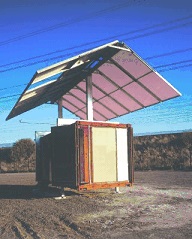
Mines safety bulletin no. 115 | 11 January 2012 | Version 1
Risk management of heat exposure in mining
DEEDI–Mines (Safety and Health), in conjunction with the Mining Health Improvement and Awareness Committee (HIAC), recently coordinated a seminar on risk management of heat exposure.
Industry participants at the event requested more information on the risk management approach to heat exposure in mining. This resulting safety bulletin covers the following components for dealing with heat as a hazard in mining:
- Risk assessment
- Using the hierarchy of controls
- Individual and medical factors affecting heat exposure and tolerance.
Read this bulletin in conjunction with Safety Bulletin 91 Heat Stress.
Overview
Heat exposure can be a problem in Queensland, especially in the summer months. There have been serious incidents of heat stress involving hospitalisation or even death, increasing the need for the mining and exploration sectors to consider their procedures for protecting workers and for dealing with situations where workers develop heat-related illnesses. Risk management should be used to manage heat exposure in the mining and exploration industry, and known individual and medical factors that can cause heat stress need to be included in the risk assessment.
1. Risk assessment of heat exposure
There are a number of risk assessment methods or tools used to assess heat exposure in the mining and exploration sectors, such as WBGT (Wet Bulb Globe Temperature), Effective Temperature, Basic Effective Temperature, Thermal Work Limit. Some methods or tools are more suited to specific conditions, tasks and jobs than others. As a minimum, sites should consider the following in their risk-assessment approach:
- radiant heat (globe temperature)
- air temperature (dry bulb)
- air movement
- humidity
- intensity of physical work, including posture and activities
- clothing and PPE (personal protective equipment) worn
- individual acclimatisation and acclimatisation regimes.
Further information on heat risk-assessment tools is available from a number of sources, including the Australian Institute of Occupational Hygienists (AIOH) and the DEEDI–Mines website.
2. Applying the hierarchy of controls to heat in mining and exploration
Examples of the hierarchy of controls for heat exposure in mining are as follows:
Elimination in mine planning and design: Consider refrigeration units (underground), and consider shade when designing site buildings and plant.
Substitution of equipment: Replace equipment that is known to generate excessive heat with equipment that is less likely to produce excessive heat (e.g. use electric-powered mobile plant instead of diesel equipment, if possible).
Isolation/engineering: Enclose equipment; install effective air conditioning in all buildings; increase ventilation; or design better cooling systems. At open-cut mines and exploration sites, install shade over structures (including temporary shade over mobile equipment for field maintenance) and provide shade and effective air conditioning for crib rooms and work areas. Other engineering examples are provided in Safety Bulletin 91.
Administrative: Reschedule work to cooler times of the shift; schedule effective work/rest regimes; manage hydration (Camelbaks or other systems that supply easy access to water) and acclimatisation; provide effective training and procedures.
PPE: Consider ventilated clothing, cooling vests, and other ways to reduce the heat load.
3. Individual and medical factors affecting heat exposure and tolerance
There are a number of individual and medical factors that affect a worker's ability to regulate heat. Sites should consider the systems they have in place for communicating these factors to workers, site health personnel and the medical personnel who may be prescribing medications to workers.
Individual factors:
- age
- previous heat illness—susceptibility
- chronic skin disorders
- habitual alcohol use
- pre-existing conditions, e.g. diabetes
- physical fitness
- obesity
- use of medications affecting thermoregulation.
Medical factors: Common medications affecting thermoregulation and heat tolerance *
- antihistamines—may inhibit sweating
- beta-blockers—may inhibit exercise tolerance
- diuretics—may cause dehydration
- angina treatments—may cause a drop in blood pressure
- tranquillisers/sedatives (e.g. antidepressants, sleeping tablets)—may lower heat tolerance/may drop blood pressure
- anti-inflammatories and analgesics—may interfere with thermoregulation
*The above list does not include all medications that may have an impact on a mine worker's ability to tolerate exposure to heat. Workers should discuss with their General Practitioner, Medical Specialist or other suitably qualified registered health professional (e.g. pharmacist, registered nurse) the effect of any medications on their ability to work in hot conditions or that may increase their risk of heat stress and related conditions
Further reading and references
- DEEDI, Presentations from the Heat Risk Management Seminar, 2011.
- Ross Di Corleto, Gerry Coles & Ian Firth, Heat Stress Standard and Documentation for use in the Australian Environment, AIOH.
Contact: minesafetyandhealth@dnrm.qld.gov.au
Issued by Queensland Department of Employment, Economic Development and Innovation
Find more safety notices
Search the hazards database

